
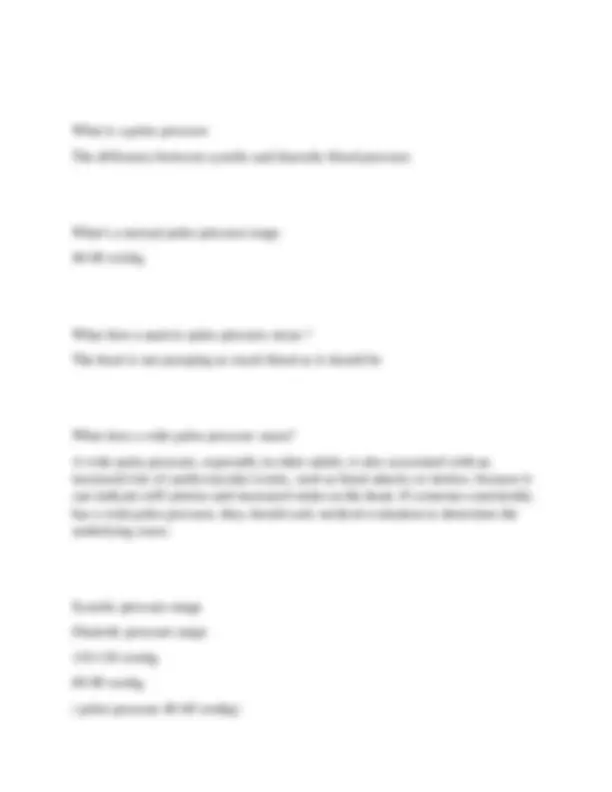
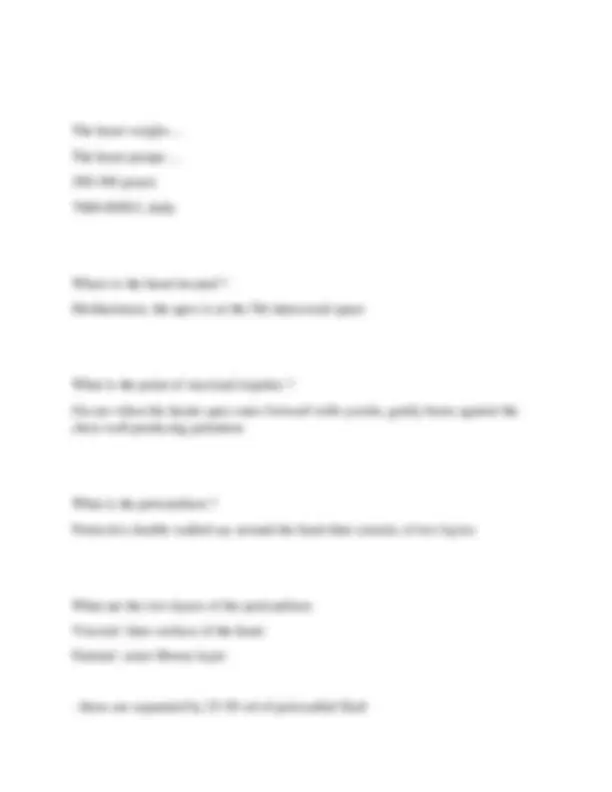
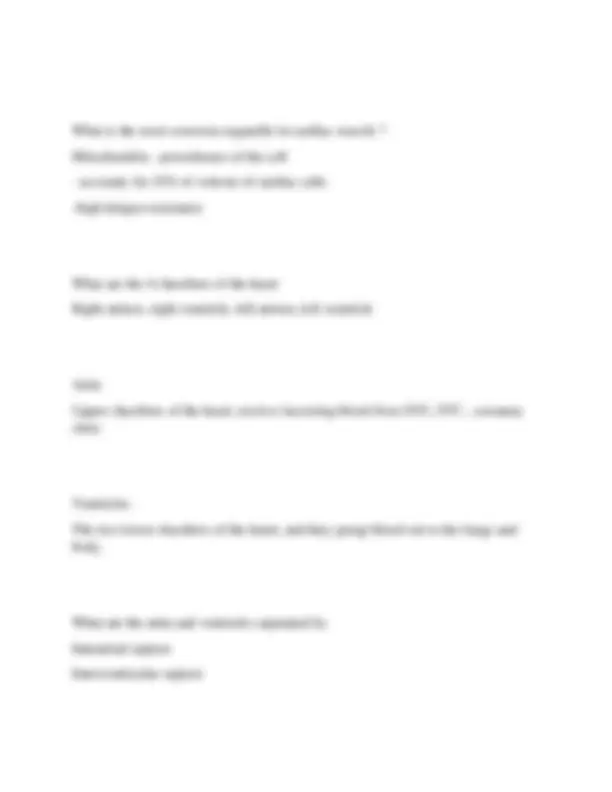
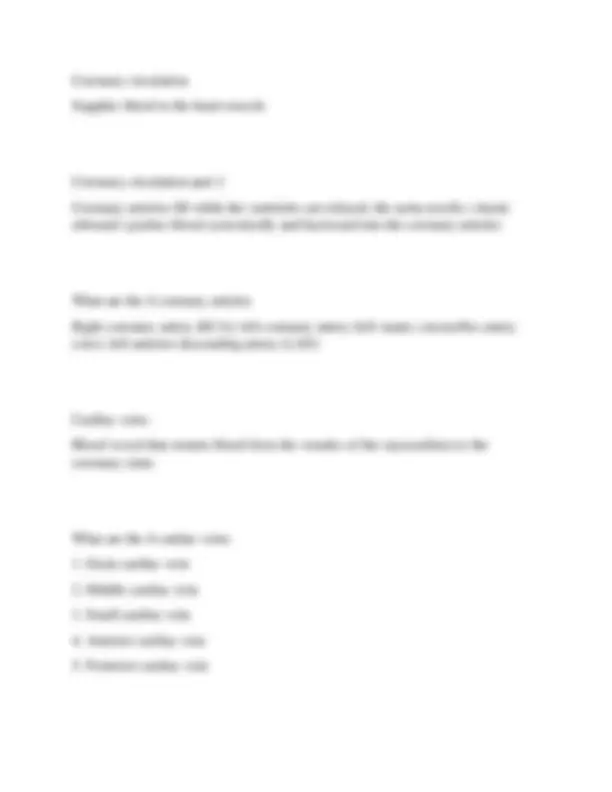
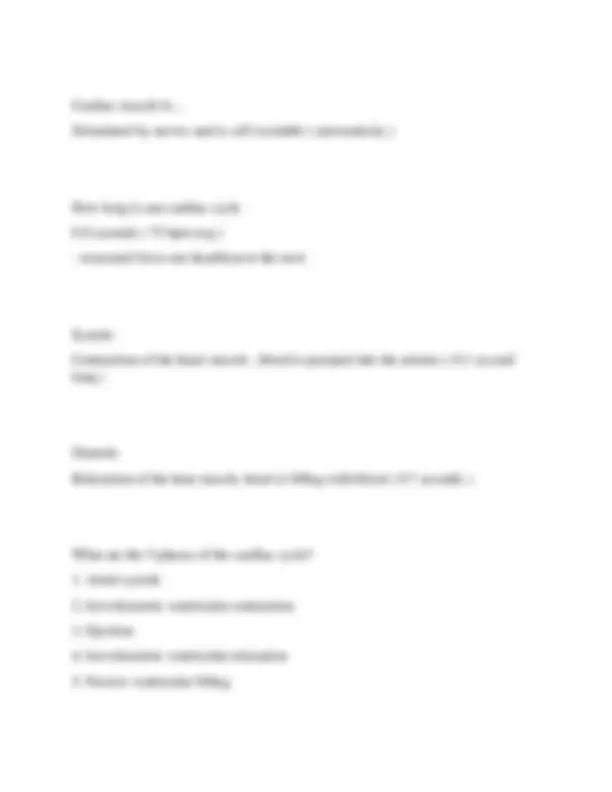
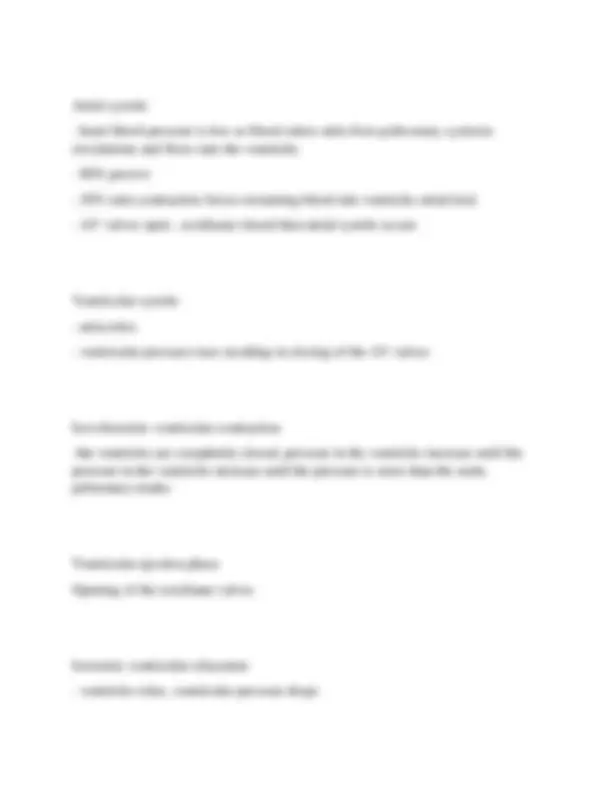
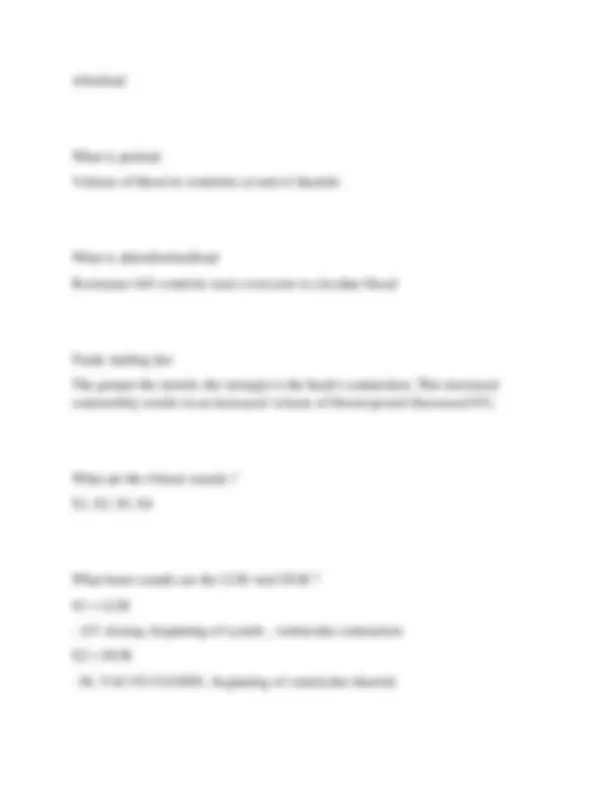
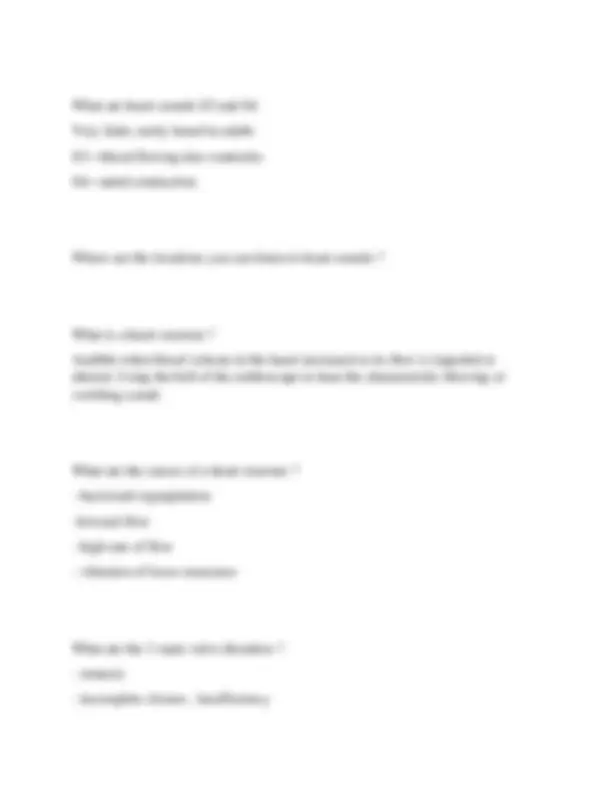
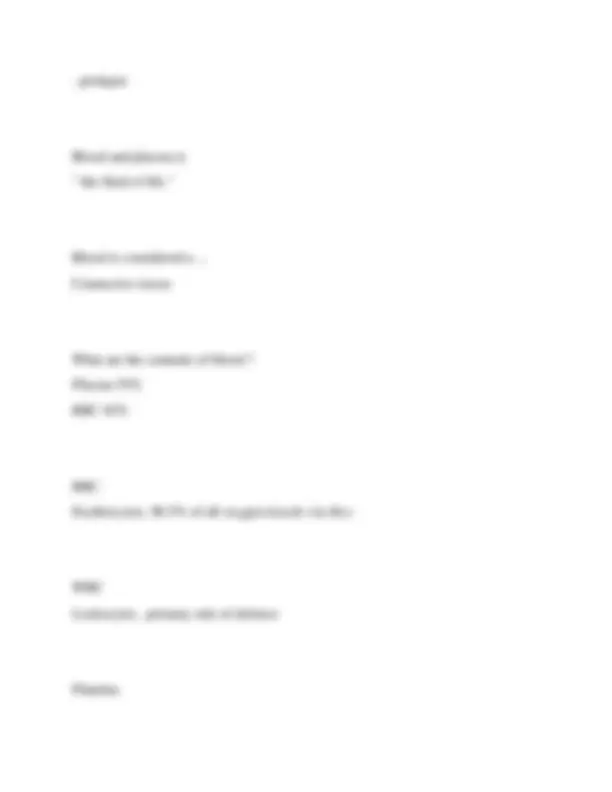
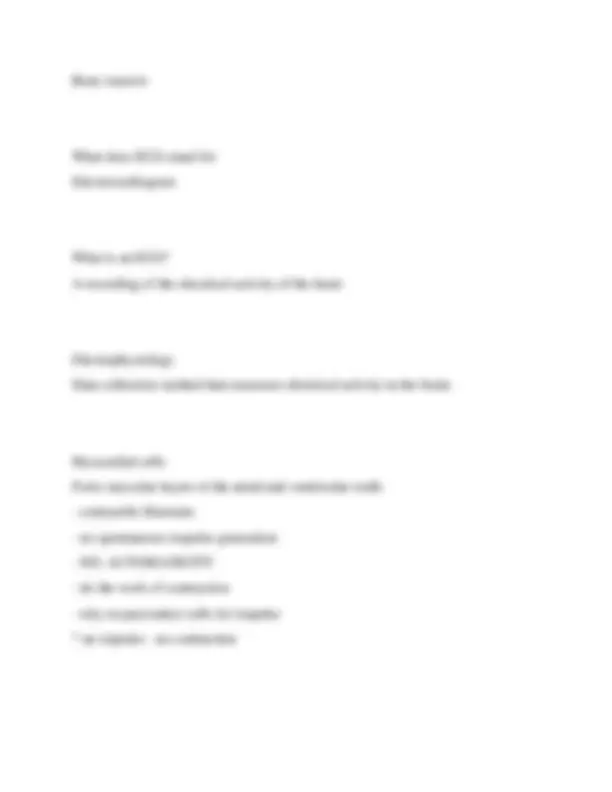
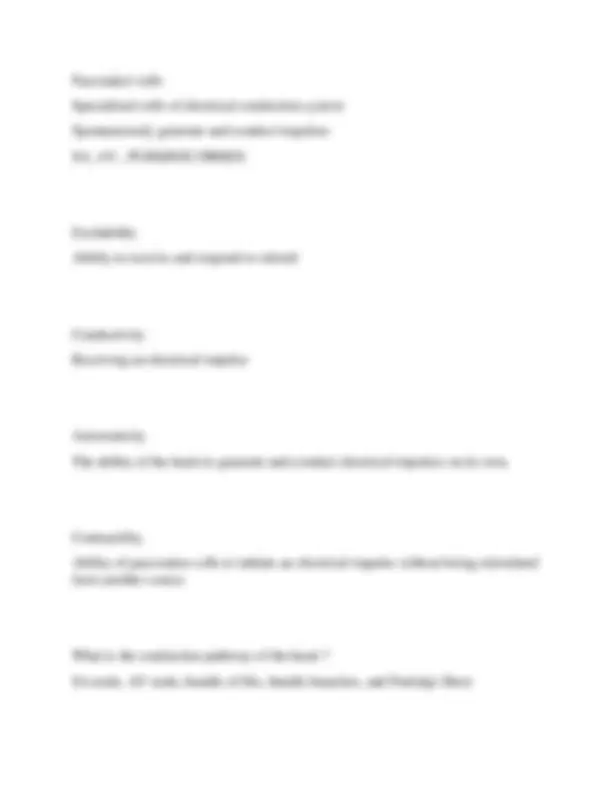
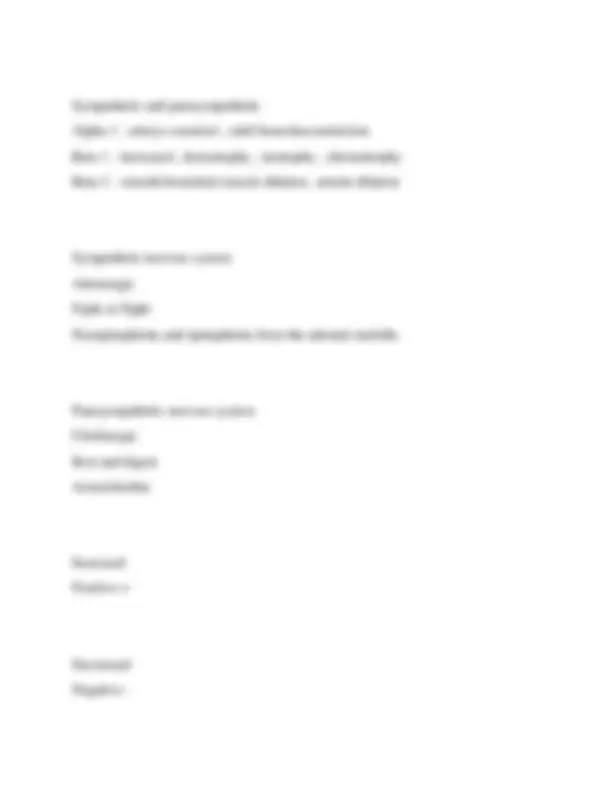
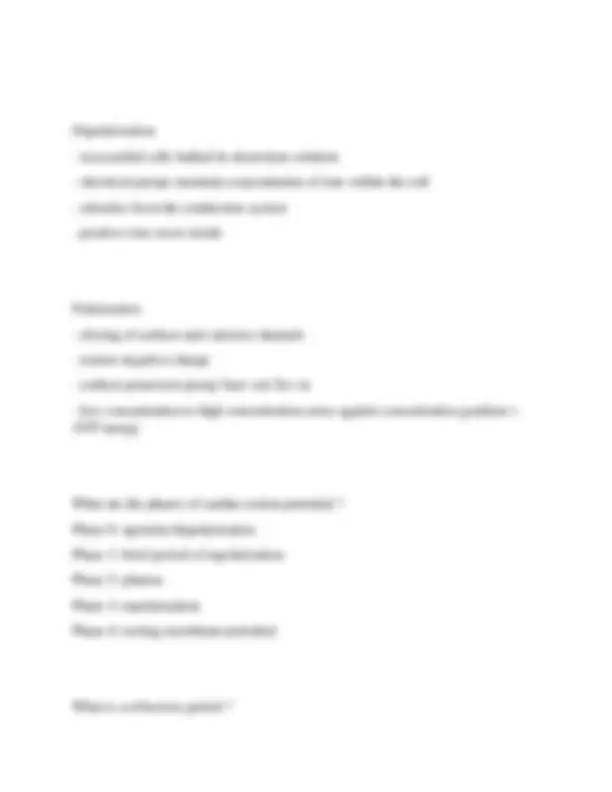
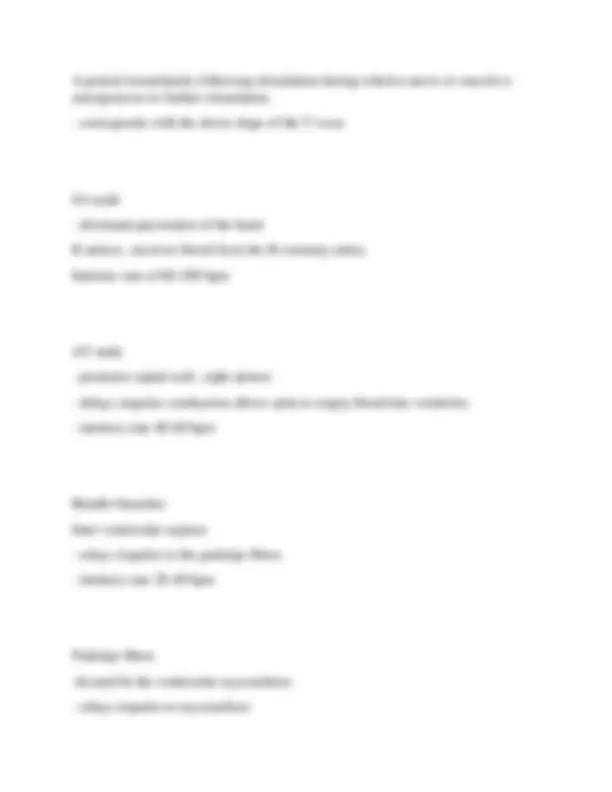
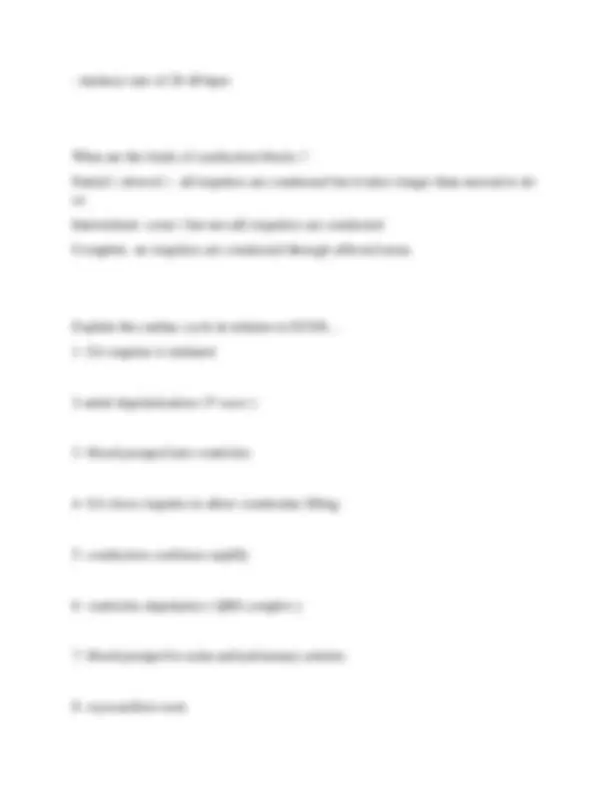
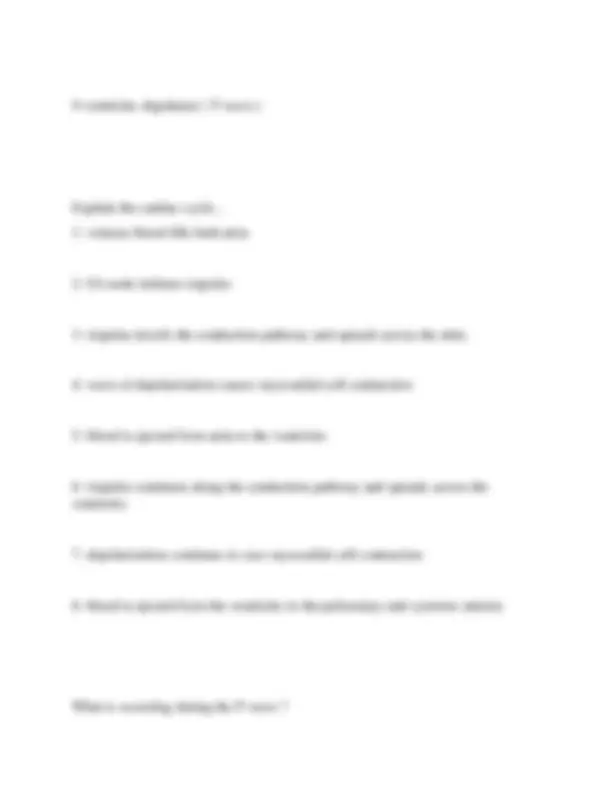
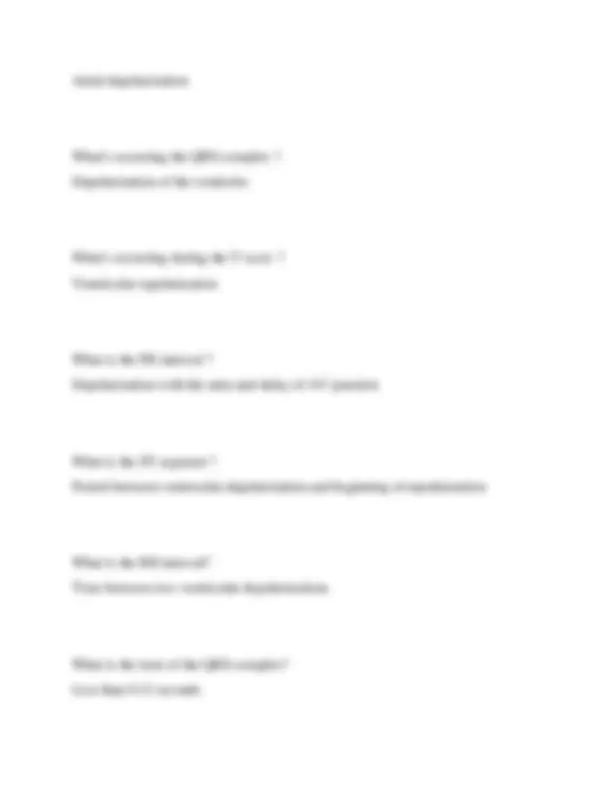
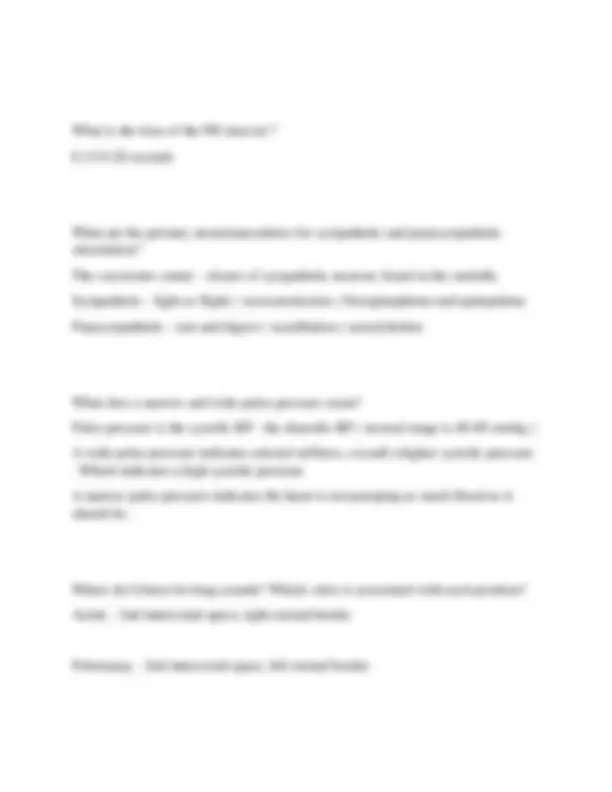
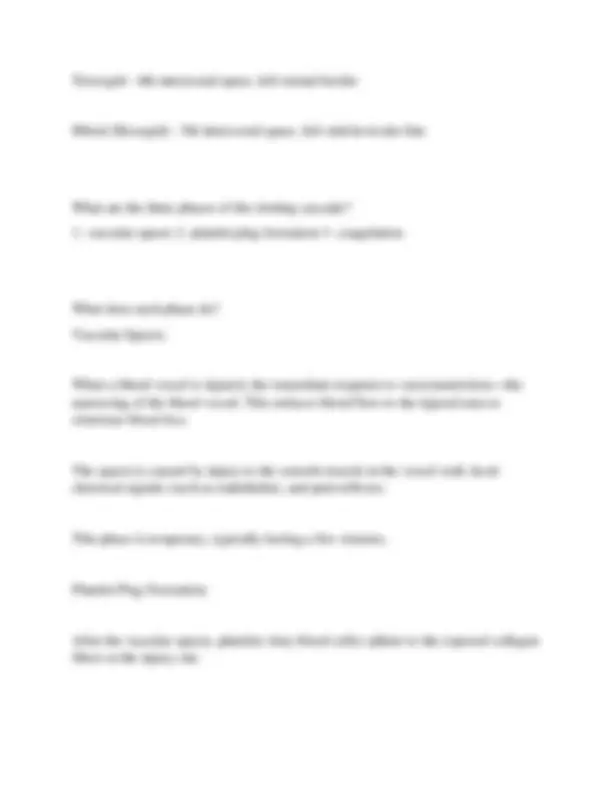
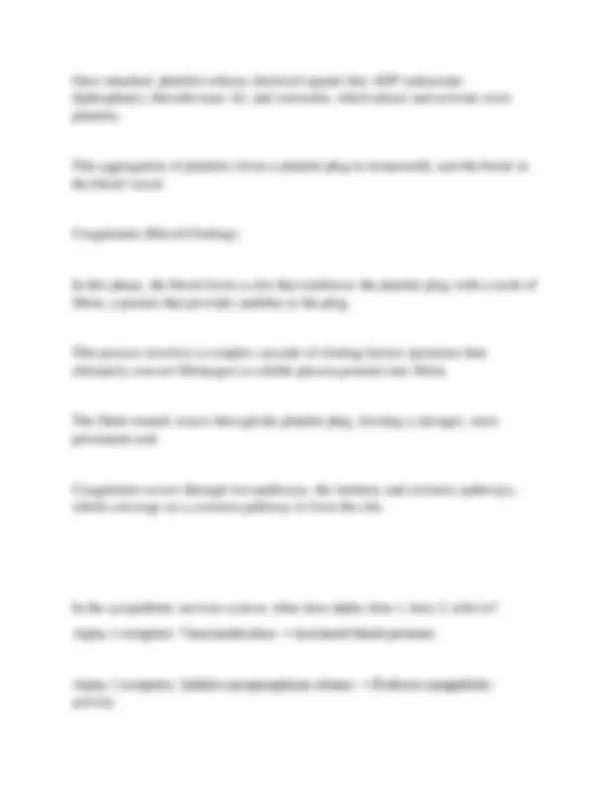
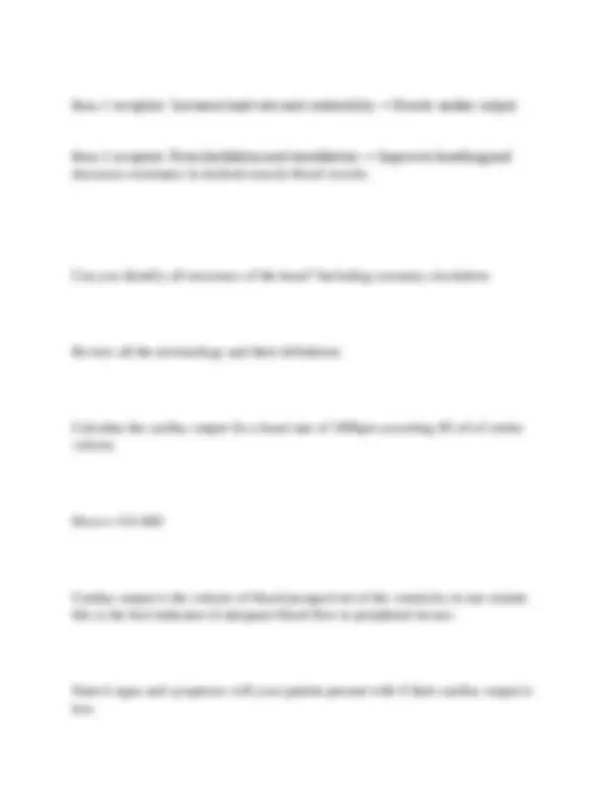
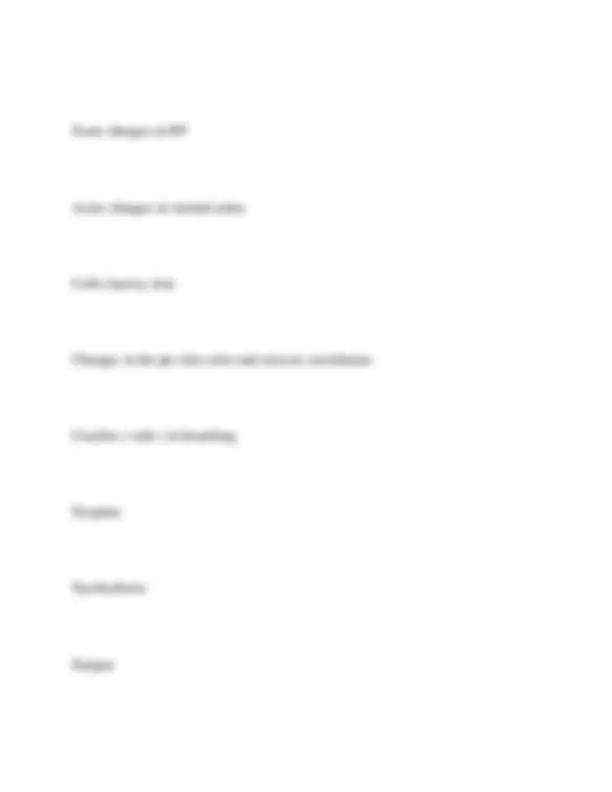
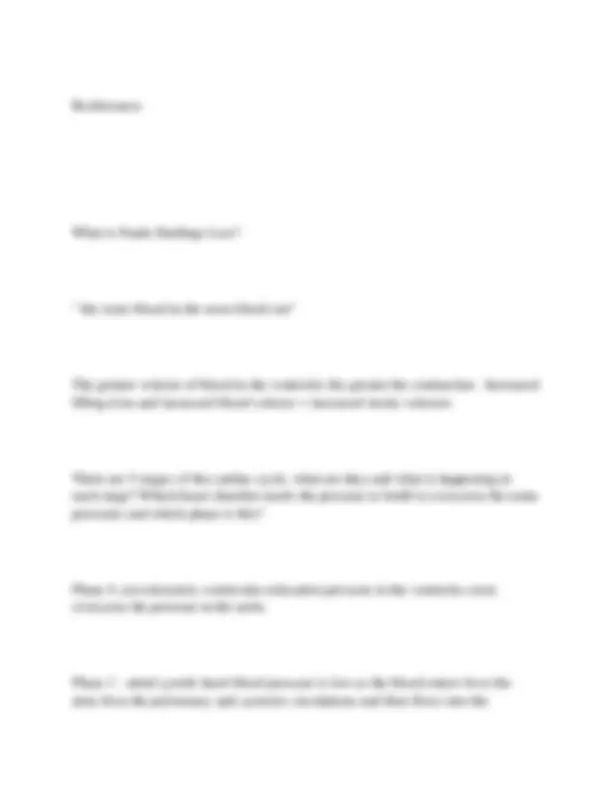
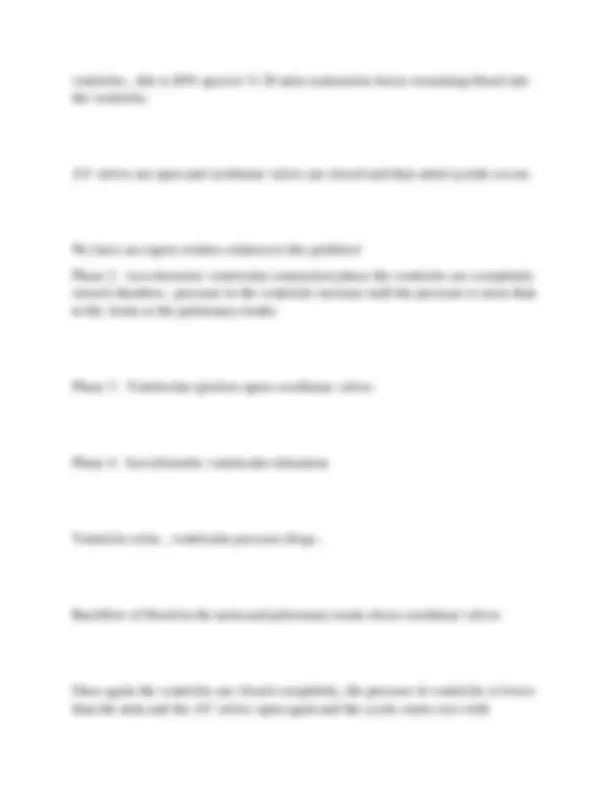
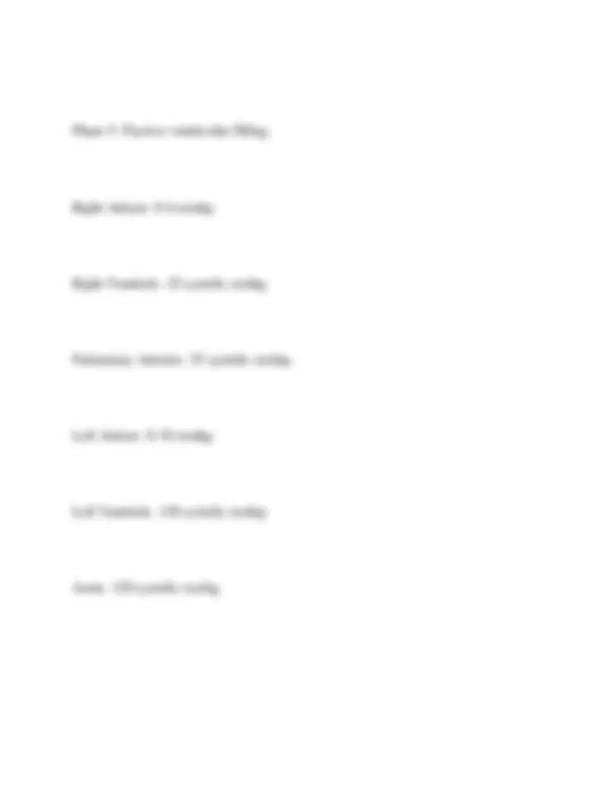
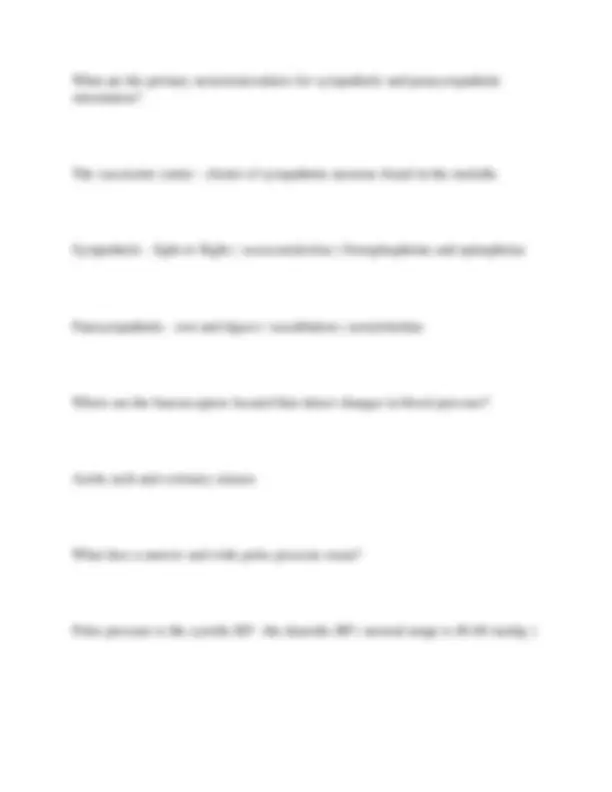
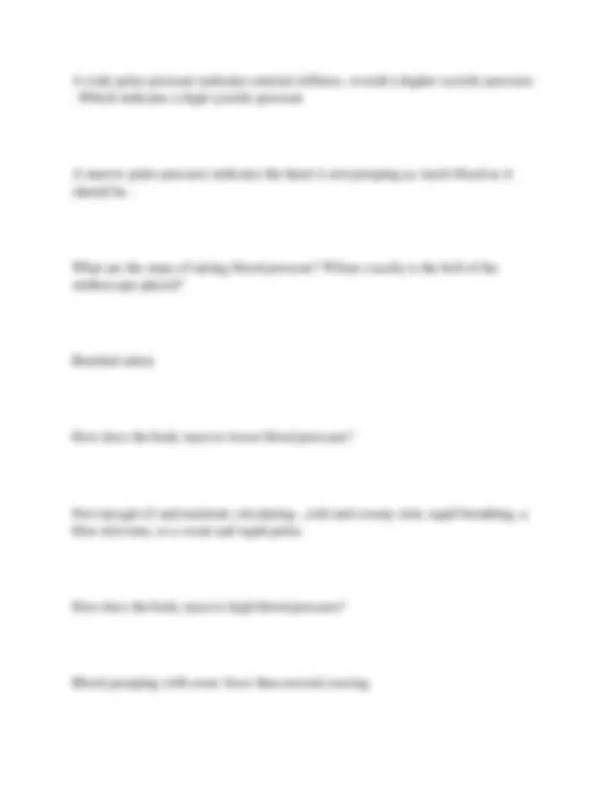
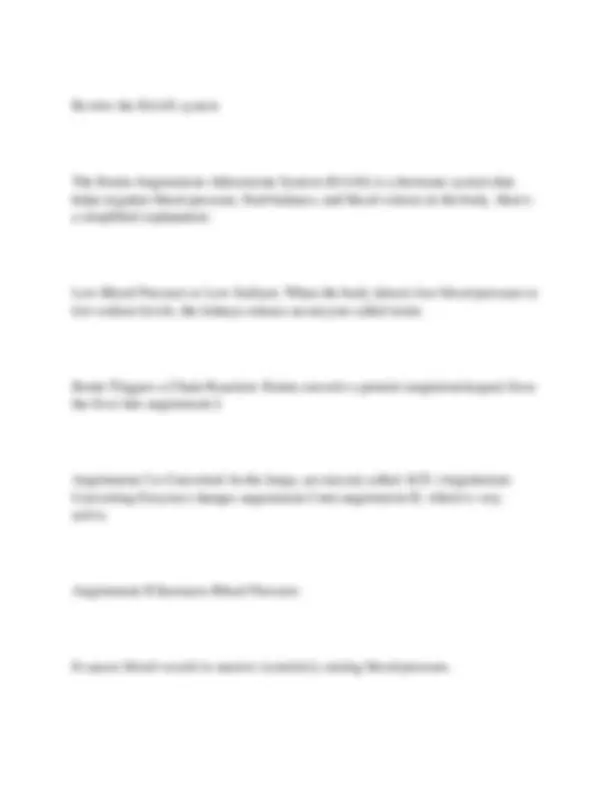
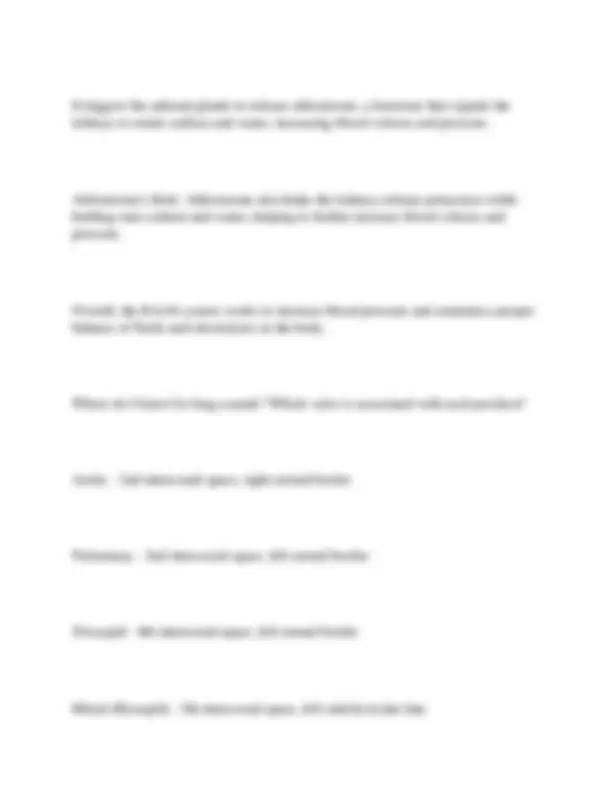
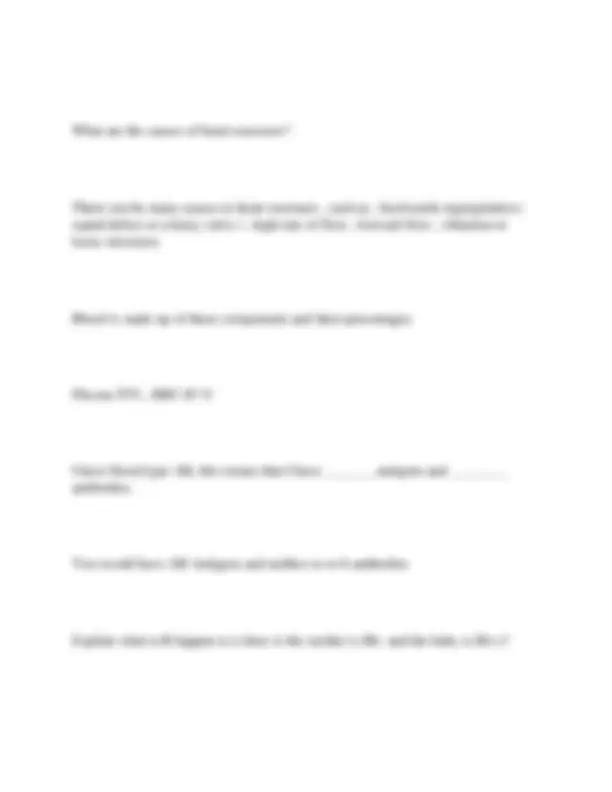
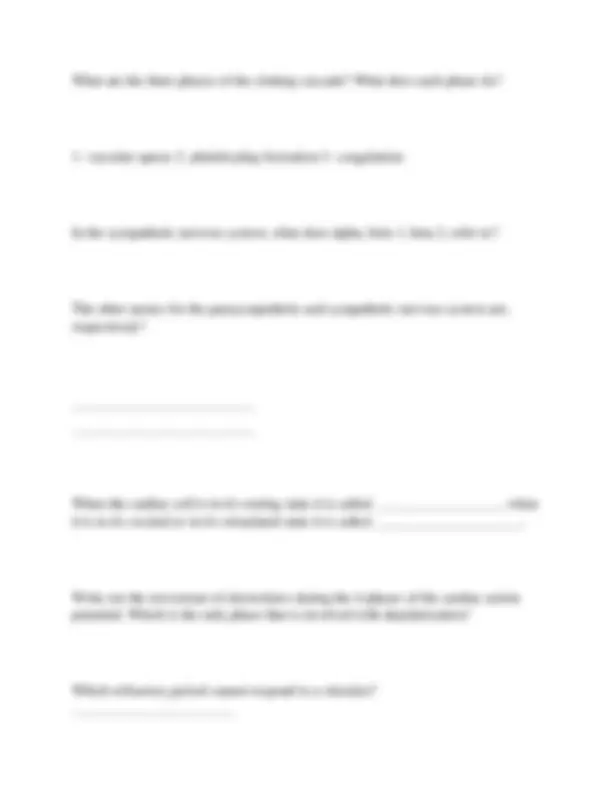
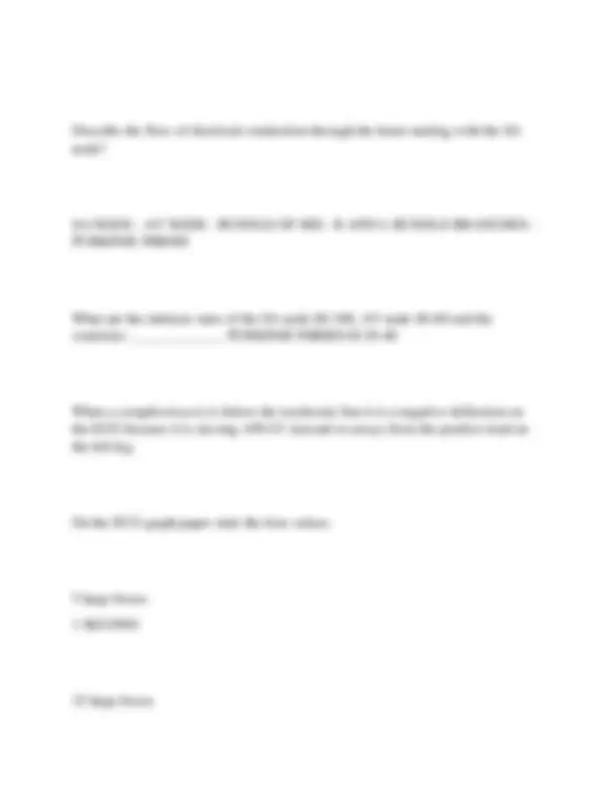
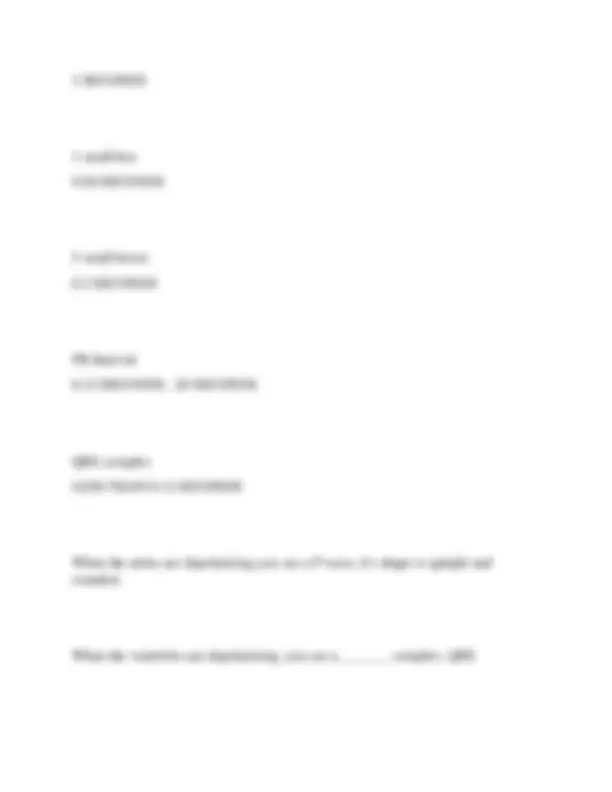
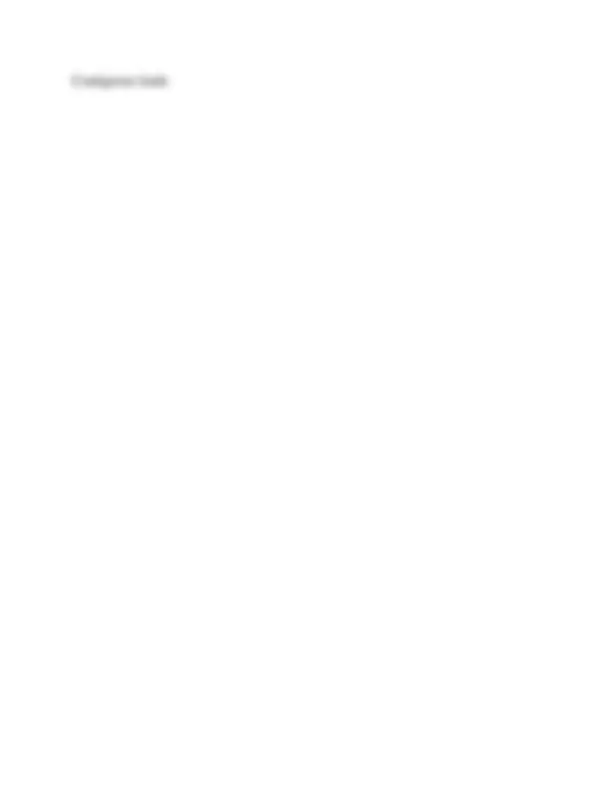


Study with the several resources on Docsity

Earn points by helping other students or get them with a premium plan


Prepare for your exams
Study with the several resources on Docsity

Earn points to download
Earn points by helping other students or get them with a premium plan
Community
Ask the community for help and clear up your study doubts
Discover the best universities in your country according to Docsity users
Free resources
Download our free guides on studying techniques, anxiety management strategies, and thesis advice from Docsity tutors
Cardiology midterm PCP EXAM 2025 2026. QUESTIONS WITH CORRECT AND VERIFIED ASWERS. A+ GRADED. What is blood pressure? Lateral pressure exerted by flowing blood on the walls of arteries What is blood pressure determined by? Force at which the heart pumps the blood What is the equation for BP? CO x peripheral resistance What is blood pressure mediated by? -the nervous system (sympathetic, parasympathetic) -chemicals, changes in ph o2 and co2 levels Chronotropic Affects the hearts rate of contraction
Typology: Exams
1 / 42

This page cannot be seen from the preview
Don't miss anything!



































What is blood pressure? Lateral pressure exerted by flowing blood on the walls of arteries
What is blood pressure determined by? Force at which the heart pumps the blood
What is the equation for BP? CO x peripheral resistance
What is blood pressure mediated by? -the nervous system (sympathetic, parasympathetic) -chemicals, changes in ph o2 and co2 levels
Chronotropic Affects the hearts rate of contraction
Dromotropic Affects the rate of electrical conduction (electrical conduction velocity)
Inotropic Enhances the strength of contraction
Where are baroreceptor stretch receptors found? Carotid sinus , aortic arch
What do baroreceptors detect? Changes in blood pressure
What occurs if systolic pressure decreases? -peripheral vasoconstriction -increased HR -increased myocardial contractility -increased electrical conductiviity
What occurs if systolic pressure increases -peripheral vasodilation -decreased HR -decreased myocardial contractility -decreased electrical conductivity
The heart weighs.... The heart pumps ... 200-300 grams 7000-9000 L daily
Where is the heart located? Mediastinum, the apex is at the 5th intercostal space
What is the point of maximal impulse? Occurs when the hearts apex rates forward with systole, gently beats against the chest wall producing pulsation
What is the pericardium? Protective double walled sac around the heart that consists of two layers
What are the two layers of the pericardium Visceral- lines surface of the heart Parietal- outer fibrous layer
What is the most common organelle in cardiac muscle? Mitochondria - powerhouse of the cell
What are the 4 chambers of the heart Right atrium, right ventricle, left atrium, left ventricle
Atria Upper chambers of the heart, receive incoming blood from SVC, IVC , coronary sinus
Ventricles The two lower chambers of the heart, and they pump blood out to the lungs and body.
What are the atria and ventricles separated by Interatrial septum Interventricular septum
2 semilunar valves
What are the 2 AV valves Tricuspid ( R atrium and ventricle ) and bicuspid ( L atrium and ventricle )
What is the function of the semilunar valves Allow ejection of blood from the heart into the arteries but prevent back flow of blood into the ventricles
The right semilunar valve is known as the Pulmonary valve ( connects ventricle to the pulmonary artery )
The left semilunar valve is known as the Aortic valve (connects the left ventricle to the aorta )
What is the pathway of blood through the heart? The pathway of blood through the heart is superior vena cava, right atrium, tricuspid valve, right ventricle, lungs for oxygenation, pulmonary valve, left atrium, bicuspid valve, left ventricle, aortic valve, aorta.
Coronary circulation Supplies blood to the heart muscle
Coronary circulation part 2 Coronary arteries fill while the ventricles are relaxed, the aorta recoils ( elastic rebound ) pushes blood systemically and backward into the coronary arteries
What are the 4 coronary arteries Right coronary artery (RCA); left coronary artery (left main); circumflex artery (circ); left anterior descending artery (LAD)
Cardiac veins Blood vessel that returns blood from the venules of the myocardium to the coronary sinus
What are the 4 cardiac veins
Atrial systole
Ventricular systole
Isovolumetric ventricular contraction -the ventricles are completely closed, pressure in the ventricles increase until the pressure in the ventricles increase until the pressure is more than the aorta pulmonary trunks
Ventricular ejection phase Opening of the semilunar valves
Isometric ventricular relaxation
-back flow of blood in aorta and pulmonary trunk closes semilunar valves
Cardiac cycle pressures R atrium - 0-4 mmhg R ventricle 25 mmhg Pulmonary arteries 25 systolic mmhg L atrium 8-10 mmhg L ventricle 120 mmhg Aorta 120 systolic mmhg
Cardiac output The amount of blood pumped by each ventricle in one minute , it is the best indicator of adequate blood flow to the peripheral tissue
What is the equation for cardiac output CO= HR X SV
Stroke volume The amount of blood ejected from the heart in one contraction.
Cardiac reserve
Afterload
What is preload Volume of blood in ventricles at end of diastole
What is afterafterloadload Resistance left ventricle must overcome to circulate blood
Frank starling law The greater the stretch, the stronger is the heart's contraction. This increased contractility results in an increased volume of blood ejected (Increased SV)
What are the 4 heart sounds? S1, S2, S3, S
What heart sounds are the LUB And DUB? S1 = LUB
What are heart sounds S3 and S Very faint; rarely heard in adults S3—blood flowing into ventricles S4—atrial contraction
Where are the locations you can listen to heart sounds?
What is a heart murmur? Audible when blood volume in the heart increased or its flow is impeded or altered. Using the bell of the stethoscope to hear the characteristic blowing or swishing sound.
What are the causes of a heart murmur?
What are the 3 main valve disorders?
Enzymes or clotting , clump together , sticks to damaged walls
Blood type is determined by Antigens present on the surface of erythrocytes
Hemostasis has 3 phases
What are the 3 phases of blood clotting?
What occurs to muscles to limit the amount of bleeding? Vasoconstriction
What are the fibres that are exposed when the blood vessel wall is damaged? Collagen fibres
What happens when collagen fibres are exposed? Platelets stick to the fibres within 30-60 seconds.
Platelets release ... Prothrombin activator
Prothrombin activator Converts prothrombin to thrombin, which creates fibrinogen and fibrin
What does thrombin do? Converts fibrinogen to fibrin
What does fibrin do? Strengthens a blood clot formed by platelets
Where are platelets produced?
Pacemaker cells Specialized cells of electrical conduction system Spontaneously generate and conduct impulses SA, AV , PURKINJE FIBRES
Excitability Ability to receive and respond to stimuli
Conductivity Receiving an electrical impulse
Automaticity The ability of the heart to generate and conduct electrical impulses on its own.
Contractility Ability of pacemaker cells to initiate an electrical impulse without being stimulated from another source
What is the conduction pathway of the heart? SA node, AV node, bundle of His, bundle branches, and Purkinje fibers
Sympathetic and parasympathetic Alpha 1 - arterys constrict , mild bronchoconstriction Beta 1 - increased , domotrophy , inotrophy , chronotrophy Beta 2 - smooth bronchial muscle dilation , arterie dilation
Sympathetic nervous system Adrenergic Fight or flight Norepinephrine and epinephrine from the adrenal medulla
Parasympathetic nervous system Cholinergic Rest and digest Acetylcholine
Increased Positive +
Decreased Negative -